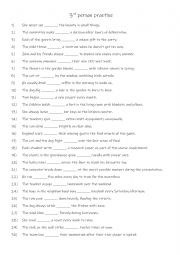
|
3rd person practise A
This worksheet helps students to find and correct common errors when talking and writing using the 3rd person. It is suitable for A1-A2 levels. Answers on page 2
Level: elementary
Age: 8-100
Type:
Downloads: 116
|
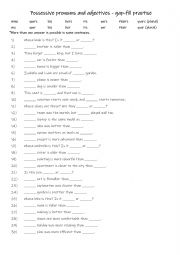
|
A1-A2 Possessive pronouns and adjectives - gap-fill practise
Students read the sentences and complete the gap-fill with the correct form of possessive pronoun or adjective. Answers on page 2
Level: elementary
Age: 8-100
Type:
Downloads: 116
|
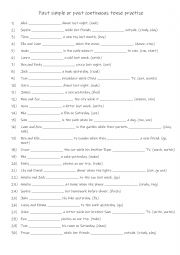
|
A1 Past simple or past continuous tense practise
Students read the sentences, then using key words to decide which tense is required to complete the gap-fill with the correct tense. Answers on page 2
Level: elementary
Age: 8-100
Type:
Downloads: 116
|
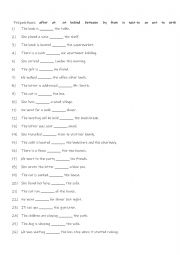
|
A2-B1 13 Prepositions of place
All prepositions are used twice in this worksheet. Students complete the gap-fill with a preposition of place. Answers on page 2.
Level: intermediate
Age: 8-100
Type:
Downloads: 116
|
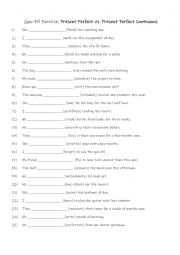
|
B1-B2 Present Perfect vs. Present Perfect Continuous practise
Students complete the gap-fill with the correct tense form using key word in (). Answers on page 2.
Level: intermediate
Age: 11-100
Type:
Downloads: 116
|
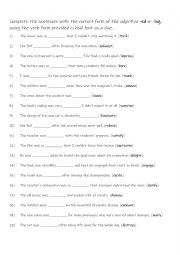
|
B1- B2 Adjective -ed or -ing practise
Students complete the sentences with the correct form of the adjective -ed or -ing, using the verb form provided in bold font as a clue. Answers on page 2.
Level: intermediate
Age: 10-100
Type:
Downloads: 116
|

|
A2+ - B1+ Adjective gap-fill exercise for comical animal behaviour
Students familiarise themselves with the 27 adjectives. Then they read the sentences to see which adjective is needed to complete the gap-fill. Answers on page 2.
Level: intermediate
Age: 9-100
Type:
Downloads: 116
|
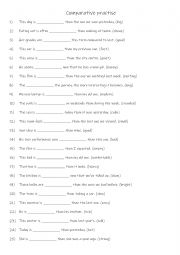
|
A1-A2 Comparative practise with 25 different adjectives
Students read the sentences and see the base form of the adj in (). Then they use the comparative form of the given adj to complete the gap-fill. Answers on page 2.
Level: elementary
Age: 8-100
Type:
Downloads: 116
|
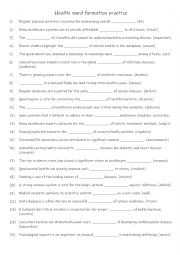
|
B1-B2 Health word formation practise
Understanding word formation allows students to expand their vocabulary, enabling them to express themselves more precisely and creatively. Knowing how to manipulate words helps them create varied sentence structures, making their writing more engaging and dynamic. Mastering word formation is key to achieving higher levels of language proficiency, ...
Level: intermediate
Age: 9-100
Type:
Downloads: 116
|
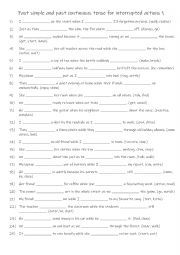
|
A1+-A2 Past simple and past continuous tense for interrupted actions 1
Learning the past simple and past continuous tenses for interrupted actions is essential because they help students describe events that were happening in the past when something else occurred. The past continuous is used to show the action that was in progress at a specific time in the past, while the past simple is used to describe the action tha...
Level: elementary
Age: 8-100
Type: worksheet
Downloads: 116
|












